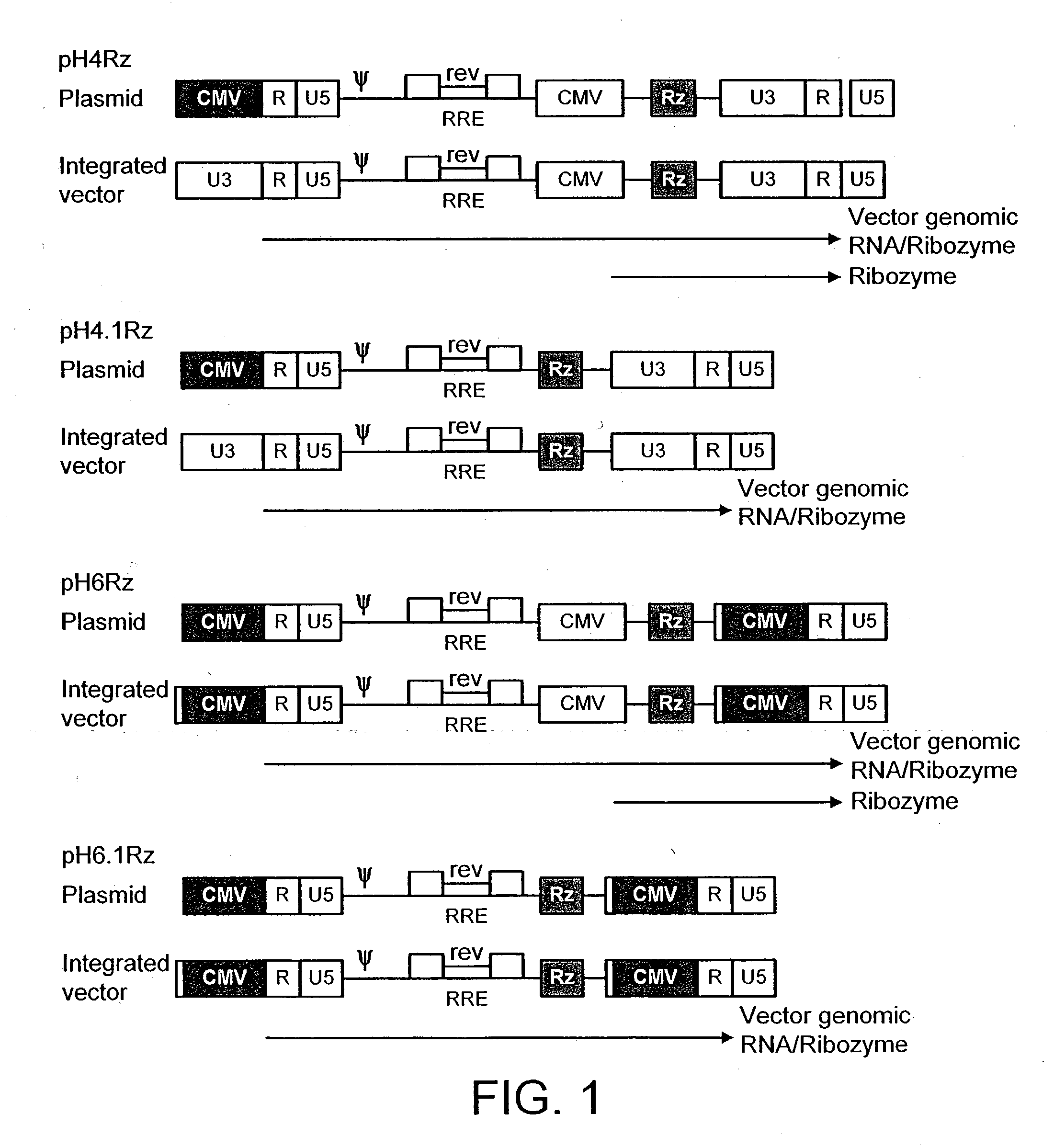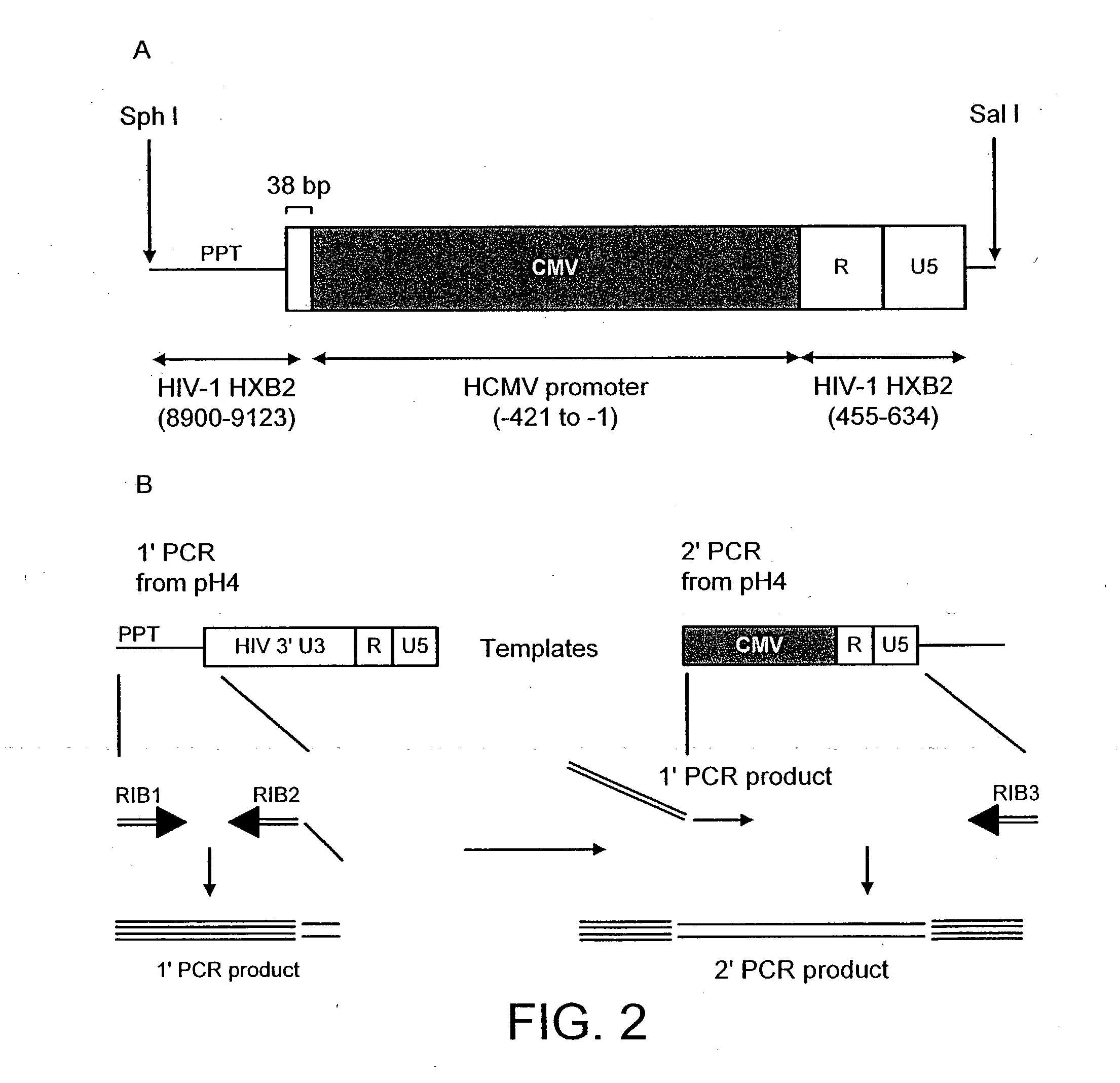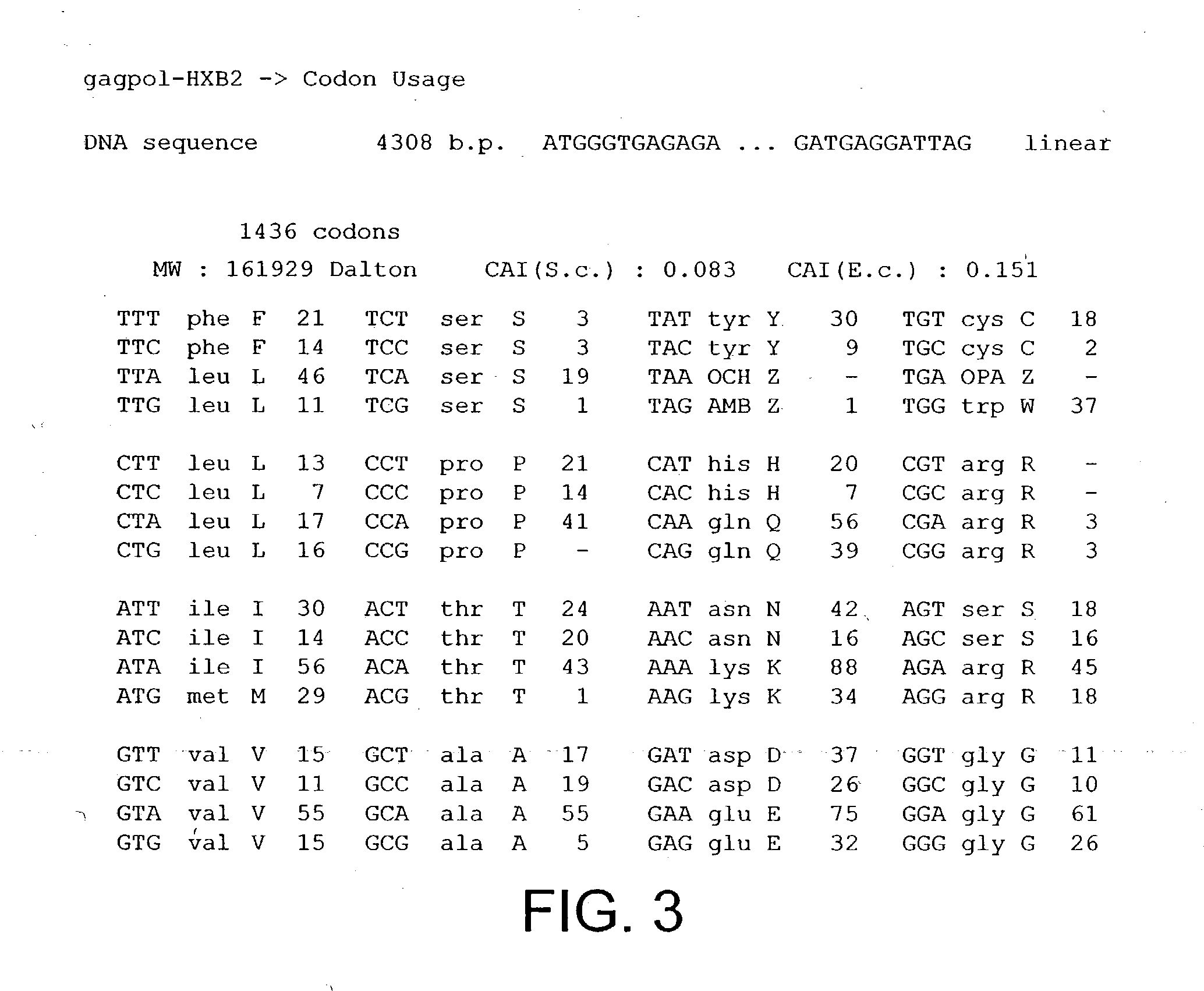Antiviral vectors
a technology of vectors and antivirals, applied in the field of antiviral vectors, can solve the problems of retroviral vector replication defect, inability to develop hiv based vectors, and inability to meet the needs of human body,
- Summary
- Abstract
- Description
- Claims
- Application Information
AI Technical Summary
Benefits of technology
Problems solved by technology
Method used
Image
Examples
Embodiment Construction
[0144] Cell Lines
[0145] 293T cells (63) and HeLa cells (71) were maintained in Dubecco's modified Eagle's medium containing 10% (v / v) fetal calf serum and supplemented with L-glutamine and antibiotics (penicillin-streptomycin). 293T cells were obtained from D. Baltimore (Rockefeller University).
[0146] HIV-1 Proviral Clones
[0147] Proviral clones pWI3 (77) and pNL4-3 (49) were used.
[0148] Construction of a Genome
[0149] The HIV gag-pol sequence was codon optimised (FIG. 4; SEQ I.D. No. 2 and SEQ I.D. 5) and synthesised using overlapping oligos of around 40 nucleotides. This has three advantages. Firstly it allows an HIV based vector to carry ribozymes and other therapeutic factors. Secondly the codon optimisation generates a higher vector titre due to a higher level of gene expression. Thirdly gag-pol expression becomes rev independent which allows the use of anti-rev or RRE factors.
[0150] Conserved sequences within gag-pol were identified by reference to the HIV Sequence database at L...
PUM
| Property | Measurement | Unit |
|---|---|---|
| volume | aaaaa | aaaaa |
| structure | aaaaa | aaaaa |
| refractory | aaaaa | aaaaa |
Abstract
Description
Claims
Application Information
 Login to View More
Login to View More - R&D
- Intellectual Property
- Life Sciences
- Materials
- Tech Scout
- Unparalleled Data Quality
- Higher Quality Content
- 60% Fewer Hallucinations
Browse by: Latest US Patents, China's latest patents, Technical Efficacy Thesaurus, Application Domain, Technology Topic, Popular Technical Reports.
© 2025 PatSnap. All rights reserved.Legal|Privacy policy|Modern Slavery Act Transparency Statement|Sitemap|About US| Contact US: help@patsnap.com



